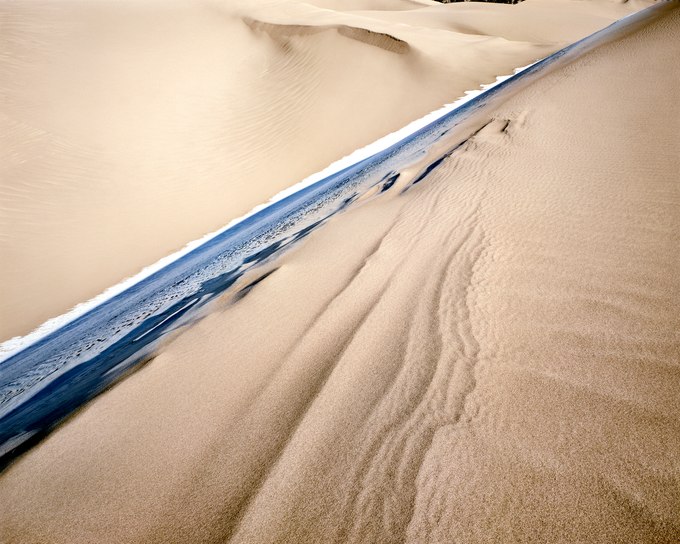“Their appearance was exactly that of the sea in a storm, except as to color, not the least sign of vegetation existing thereon,” wrote U.S. Army Lieutenant Zebulon Pike about the Great Sand Dunes on an 1807 expedition he led through the Rocky Mountains.
Dune fields often form where the earth’s tectonic plates move apart, creating depressions in the earth’s contours known as rift valleys, such as southern Colorado’s San Luis Valley. Over at least 12,000 years, fine grains of volcanic rock traveled via rivers and wind from the San Juan Mountains to settle in this valley, along with coarser grains washed down from the nearby Sangre de Cristo Mountains.
On an early December morning, the combination of rapid night-time cooling and air saturated with moisture stored from within the dunes created a thick coating of frost on their surface, so thick that it resembled snow. As the sun climbed, it quickly melted away, leaving a trace in the shadow of this 700-foot dune that reflected the cyan-blue sky.
Though the morning air was still, wind blowing across the dunes from the previous day created ripples like fingerprints, sorting large grains on the ripples’ crests and smaller grains in their troughs. When seen from the air, the dune field also reveals a granular flow, the ever-changing shape of the dunes resulting from the wind’s energy.
- James Baker

